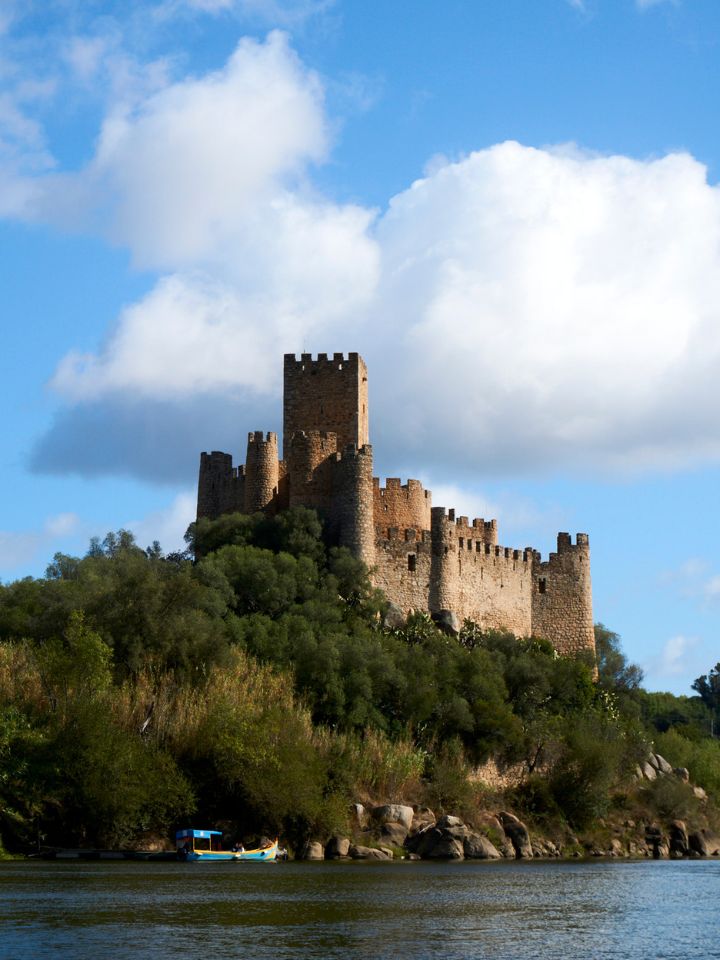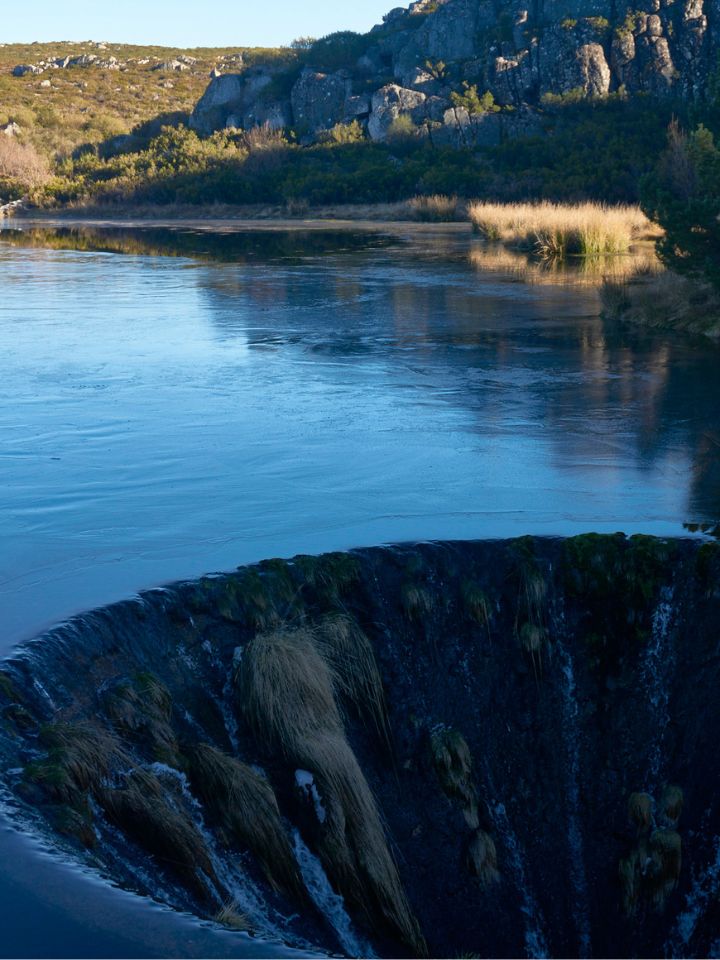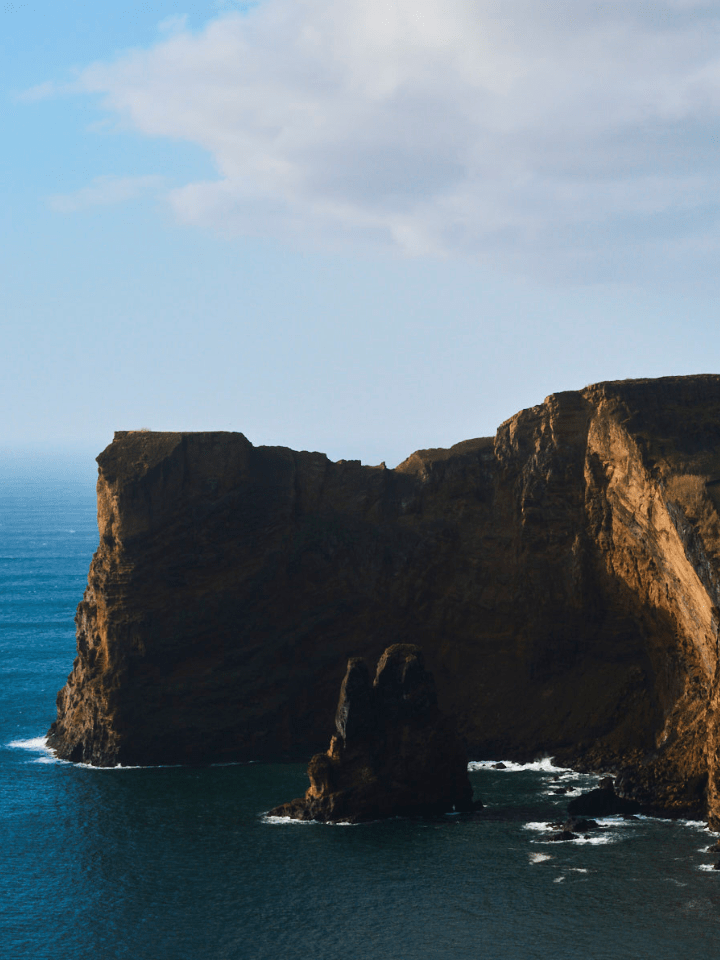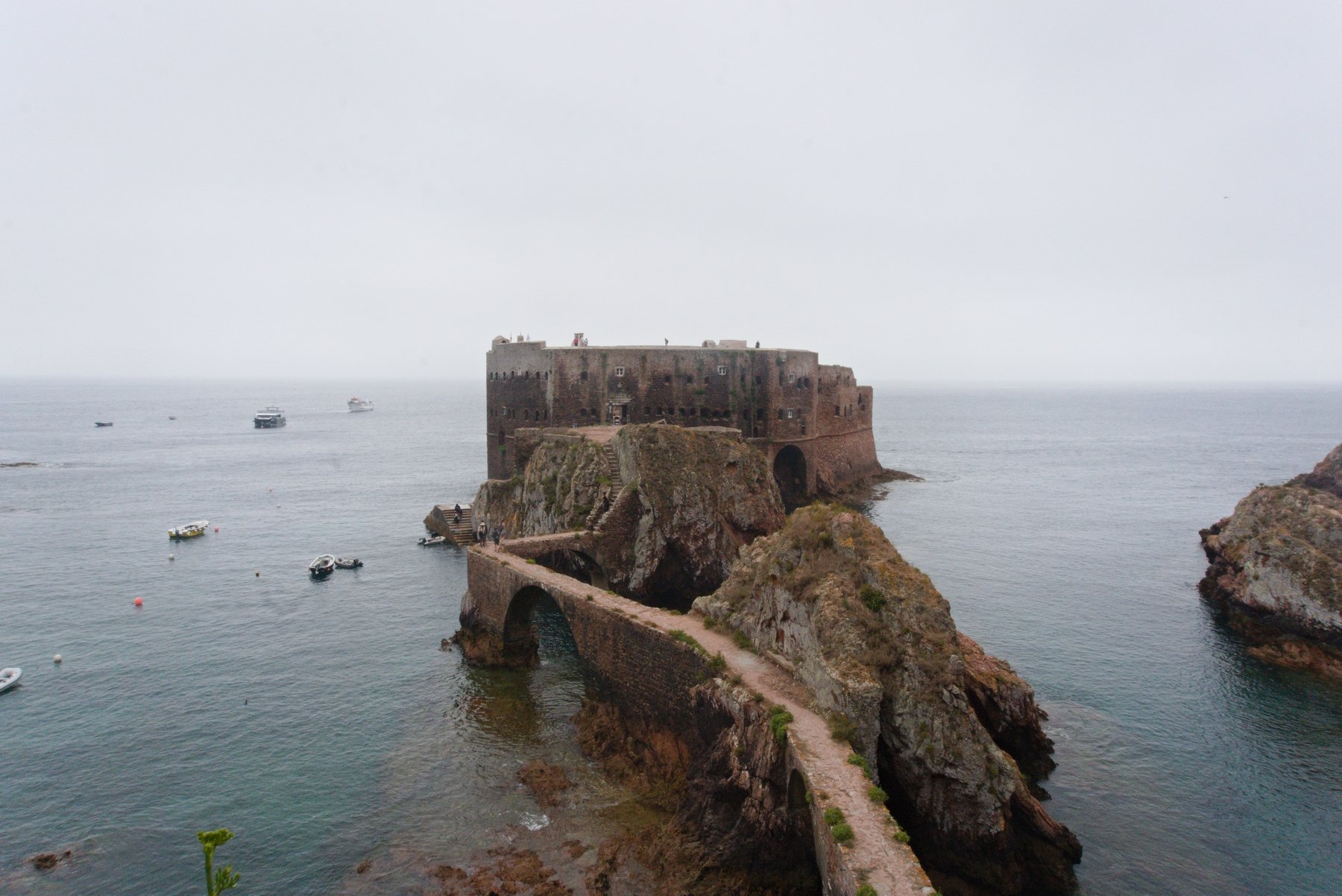
The Berlengas, an archipelago located about 13 kilometres off the coast of Peniche, is a real attraction, mostly because of the impressive fort that stands here in the middle of the Atlantic Ocean.
This archipelago is made up of three islets: Berlenga Grande (‘Berlenga Island’), Estelas and Farilhões-Forcadas. Of the three islets, only Berlenga Grande is inhabited and visitable, although there is a lighthouse at the top of the steep cliffs of the Farilhões-Forcadas islet.
How to Visit the Berlengas
As it is a protected area by the Institute for Nature Conservation and Forests (ICNF), there is a limit of 550 people visiting Berlenga Grande at the same time. Consequently, in order to facilitate control, it is mandatory electronic registration and payment of a fee, the Berlengapass. This fee is 3€ / person (in 2024) and is compulsory for anyone visiting Berlenga Grande, even if you buy the ticket (as we did) through a tour operator. This pass is checked by the ICNF itself and you can be asked for proof of purchase at any time during your tour of the island.
As for how to get to Berlenga Grande, there are lots of options with different activities and prices. Due to the variety on offer, we really recommend that you compare the options and see which is best for you. In our case, we compared prices, activities and opinions and ended up booking with BerlengasTur.
Bear in mind that these boats work in sea conditions that can make the Peniche - Berlenga Grande crossing with waves of up to 3 metres. That said: for people prone to seasickness, we recommend the speedboats that make the journey. The catamaran journey, although fun, is hard on the stomach.
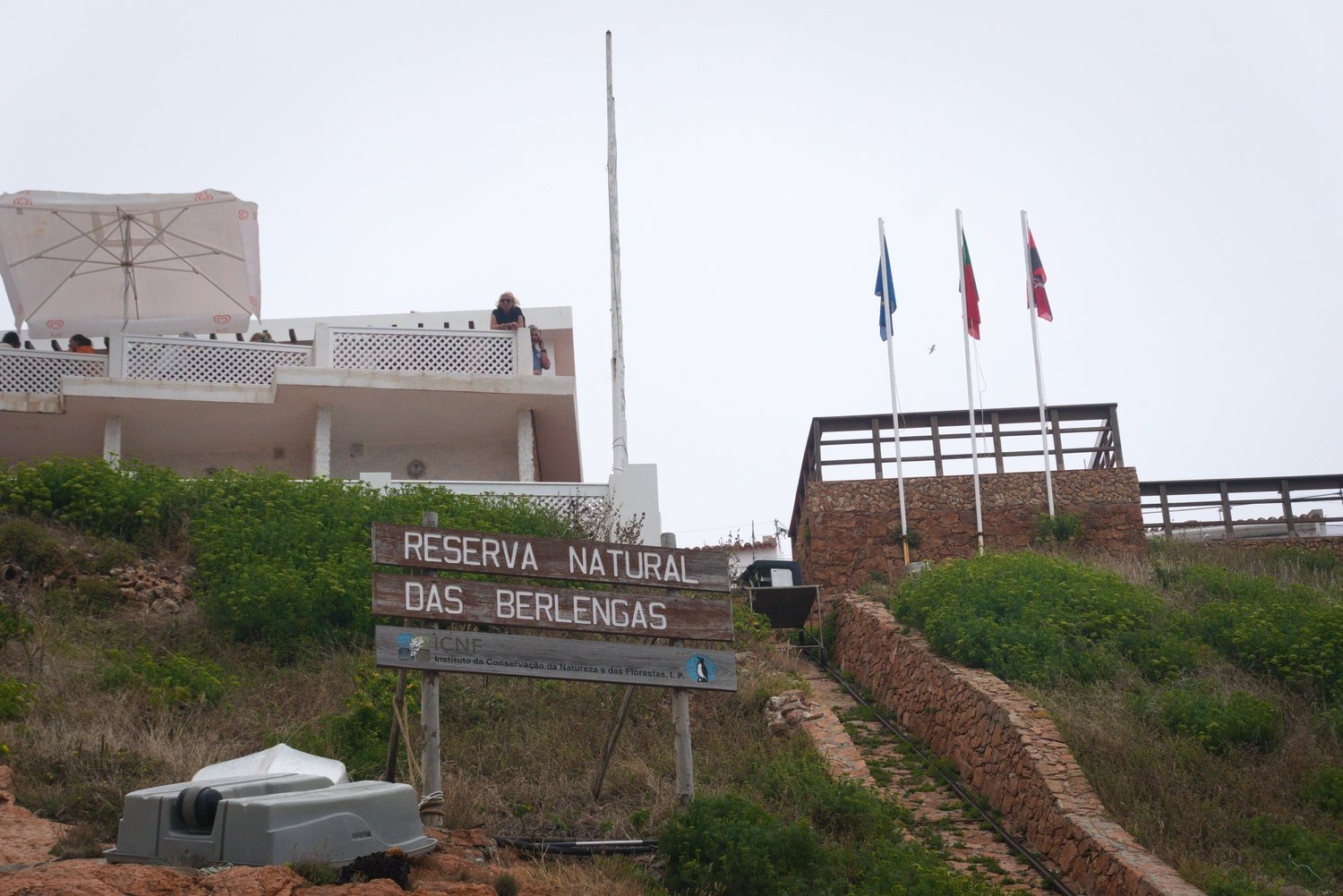
What to See in Berlenga Grande
Although it's a small island and you can only walk along the marked roads, Berlenga Grande still has a lot to see. You can take a look at the official map (here) and walk the paths around this magnificent island. We recommend taking the available trail, which passes the main sites (map here). If, like us, you're going to visit the caves and take the guided tour, you'll probably start at the Fort and work your way down to the fishermen's neighbourhood / pier, but of course you can do the opposite way round - it's easy and worthwhile!
Fort of St John the Baptist / Berlenga Fort
The element that attracts so many people to Berlenga Grande is obviously the Fort of St John the Baptist.
This fort dates back to the 17th century, having been built with stones that were part of the ruins of the monastery of the monks of the Order of St Jerome who lived here for a few decades. In the 19th century it was abandoned, then used for military purposes and, after this need had passed, it was restored again in the second half of the following century. Thanks to the Association of Friends of Berlenga (AAB), this incredible building now serves as a shelter where people can stay overnight.
To support the Association that takes care of the building, people visiting the island can see a small part of the fort through the simple price of 1€. If you're on a guided tour with one of the tour operators, you can also be taken to a part that can only be accessed this way, which corresponds to the old soldiers' latrines.
Getting out of the fort towards the rest of the island awaits you with some painful 290 steps, which offer a priceless view.
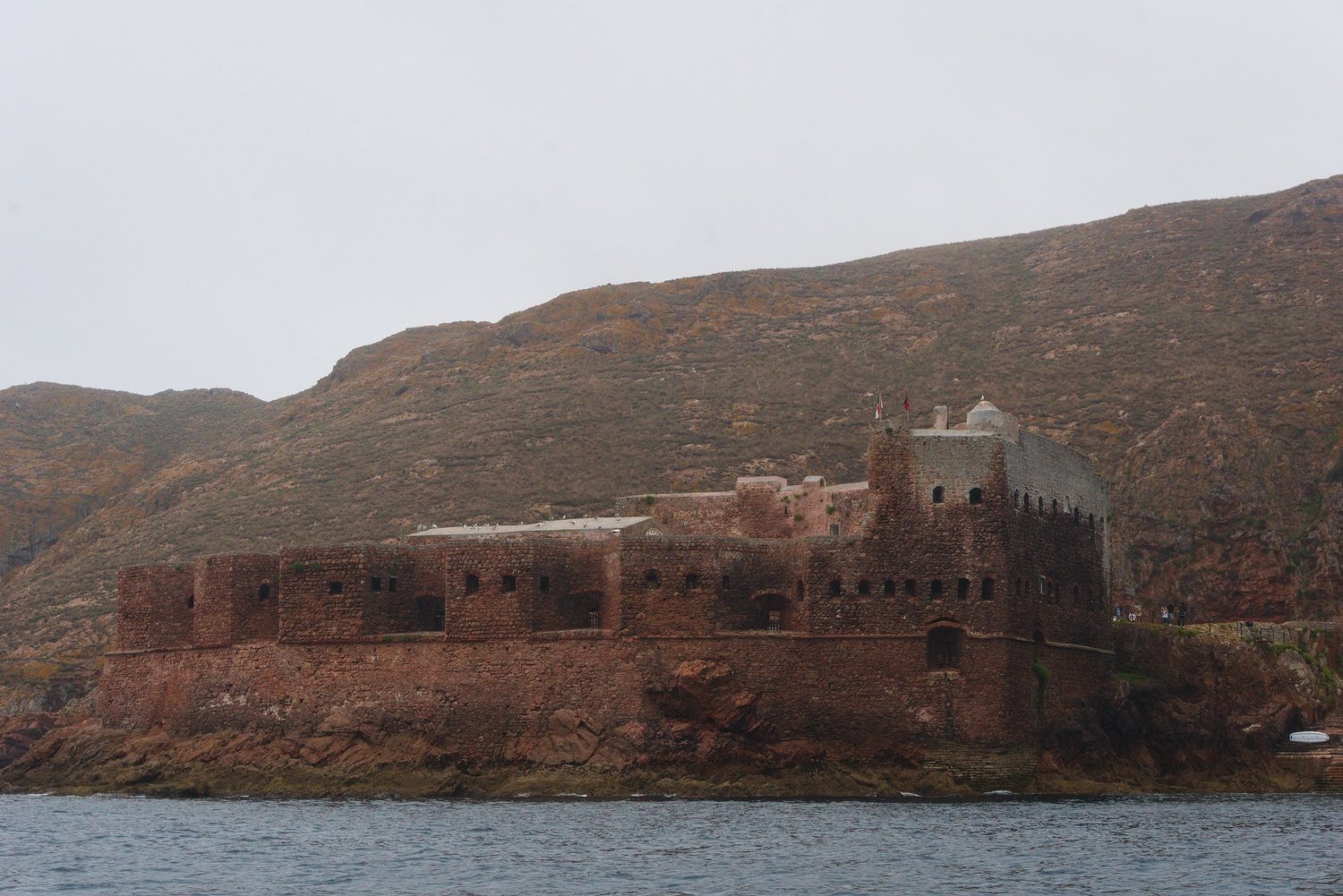
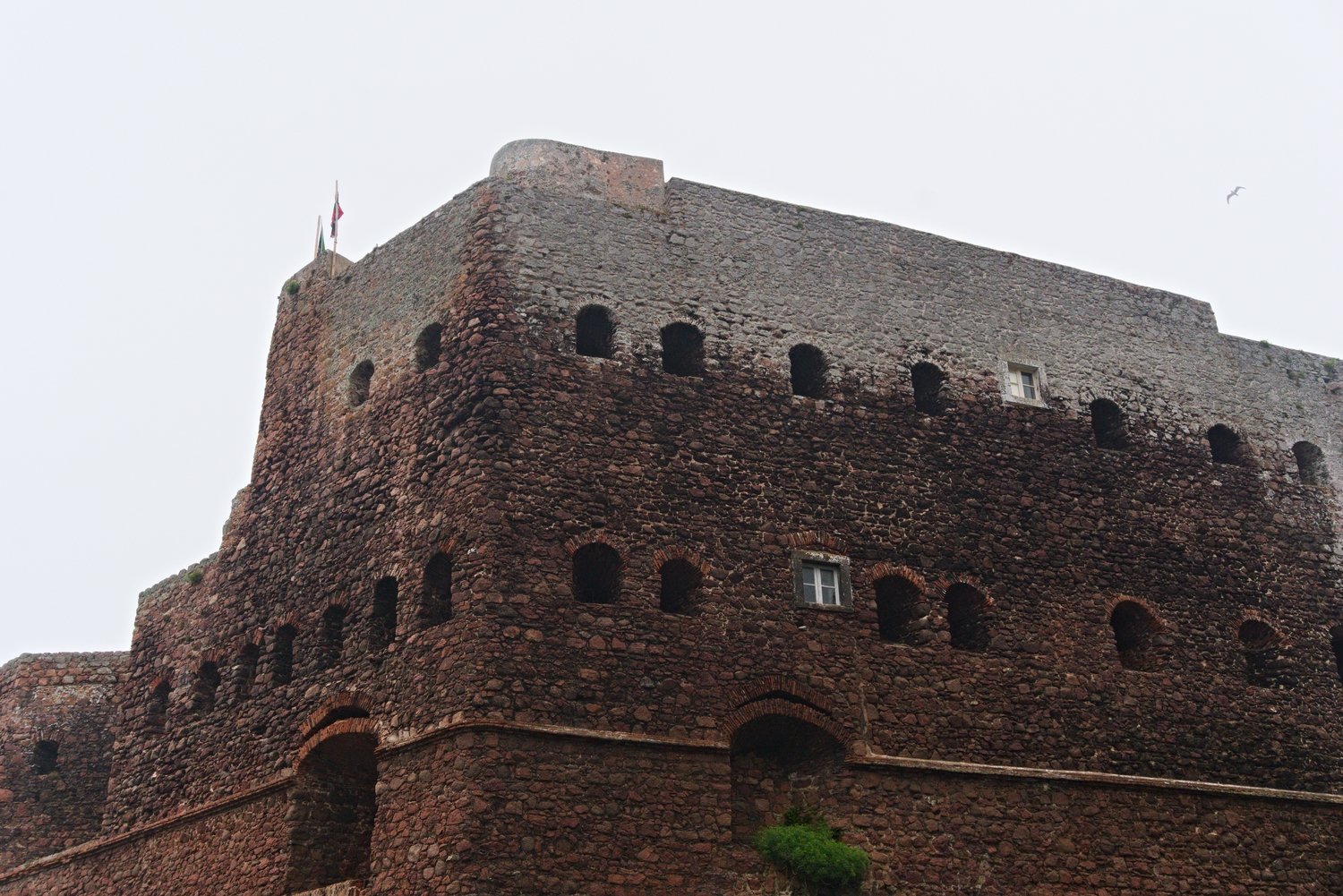
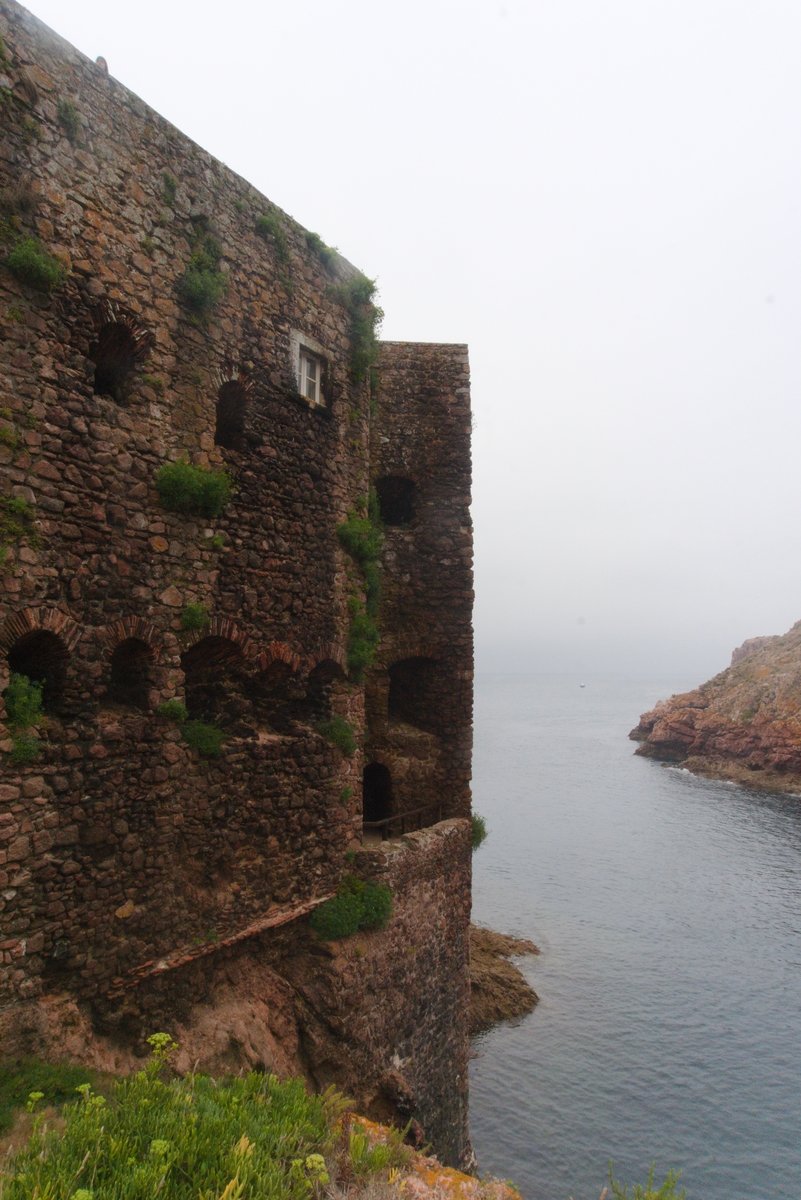
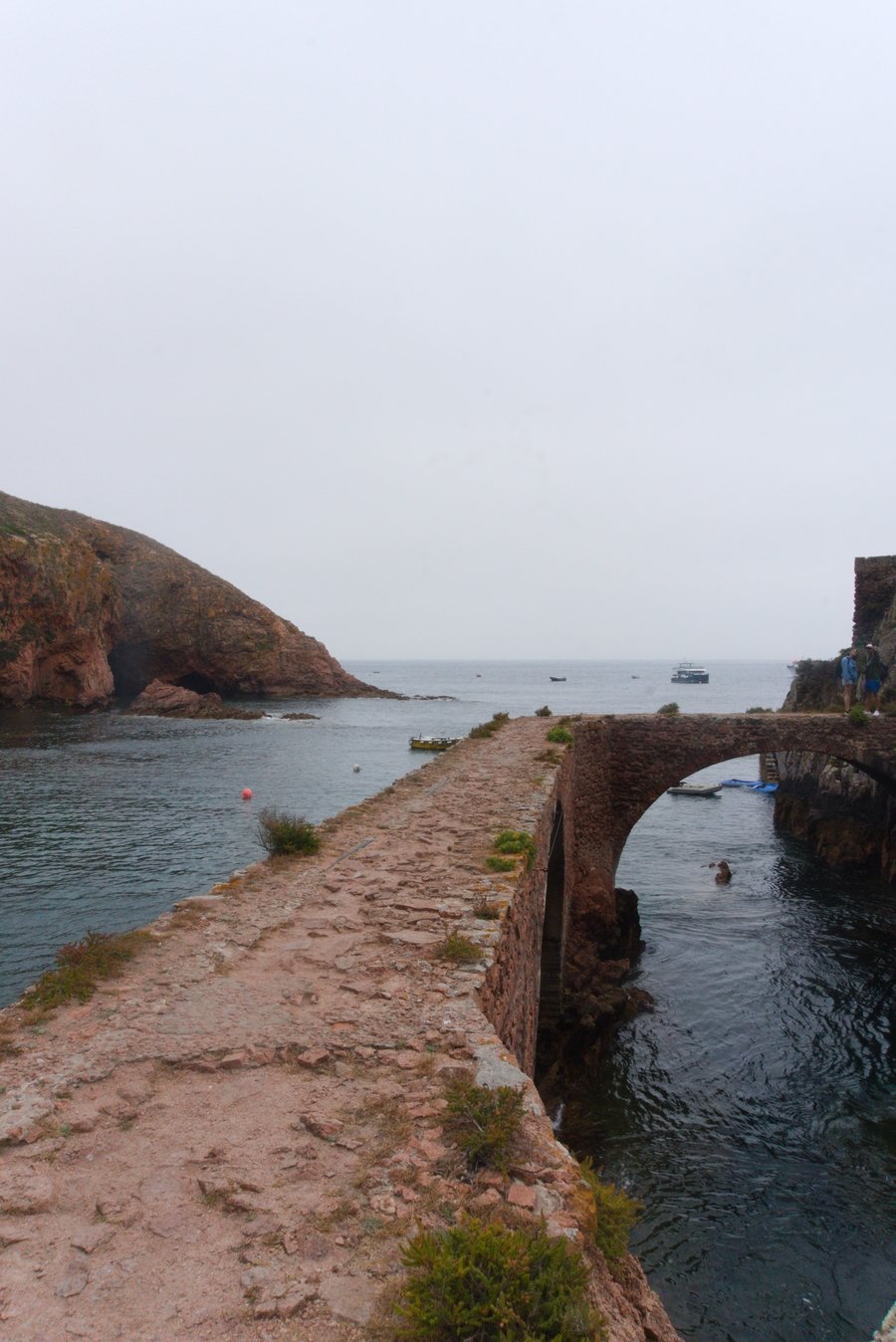
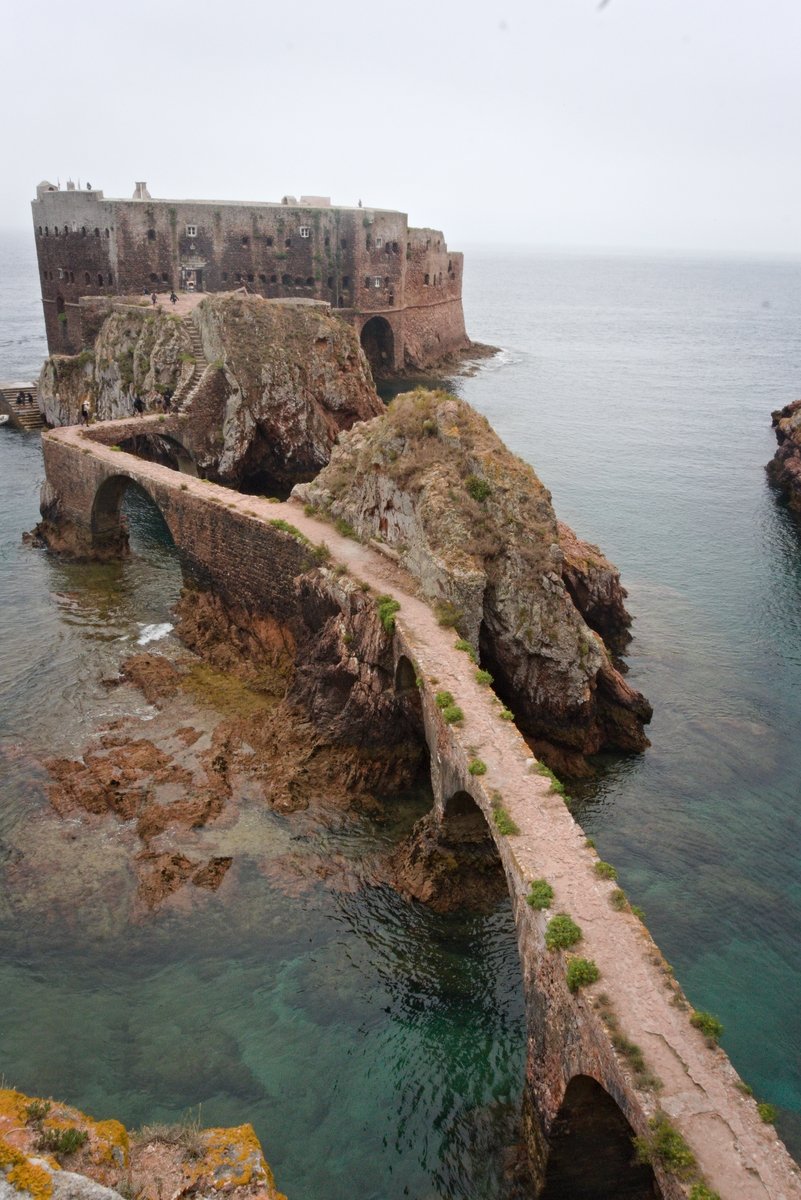
Cisterns
When you reach the top of the staircase, you can choose to head to the right, towards the main part of the island (the lighthouse and the fishermen's neighbourhood) or go a little to the left and discover the south-west of the island and the old cistern that you'll find here.
This is undoubtedly the only truly unused part of the island: here you'll find large cisterns that were used for several decades to collect fresh water, but which are now surrounded by protective barriers as they have begun to collapse.

Southwest Berlenga and Cova do Sono
Following this path will take you to the south-western point, the furthest part of the island. From here you'll have an incredible view of the so-called cathedral, the Cova do Sono (Sleepy Hollow), a dome-shaped geological formation resulting from the erosion of the cliff, with a small beach at its feet.
This is where some diving activities take place. It's also in this area that we found the most seagulls (although they are common all over the island).
Berlenga Lighthouse / Duke of Bragança Lighthouse
Following the path, you'll find the Duke of Bragança Lighthouse, or Berlenga Lighthouse, where you'll find the island's only permanent inhabitants: the lighthouse keepers and lighthouse support staff, those who study the island and protect the reserve and, of course, the dog that protects this building - "Farol".
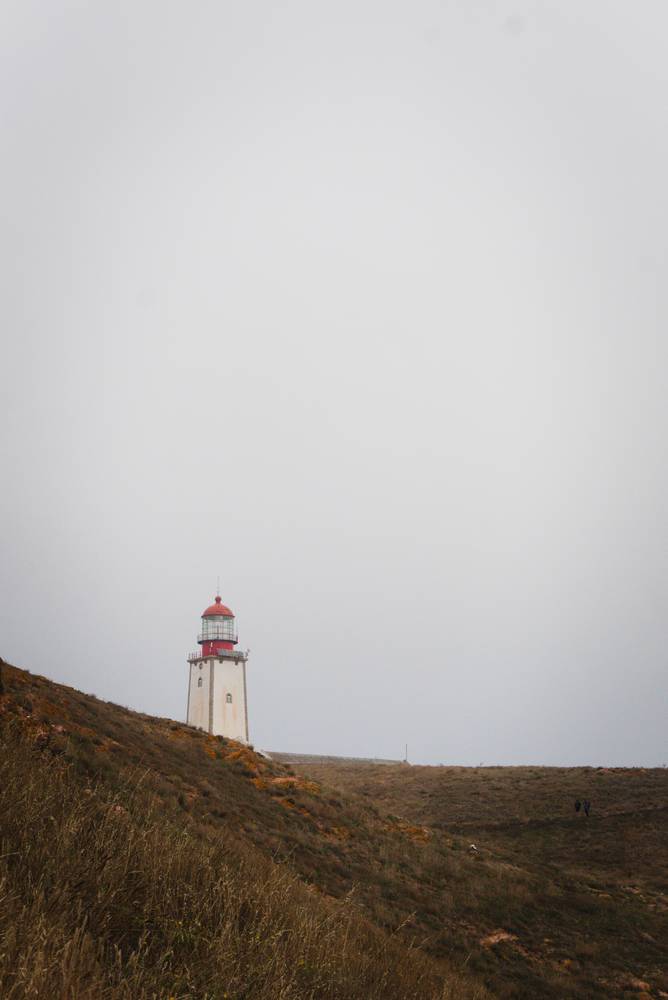
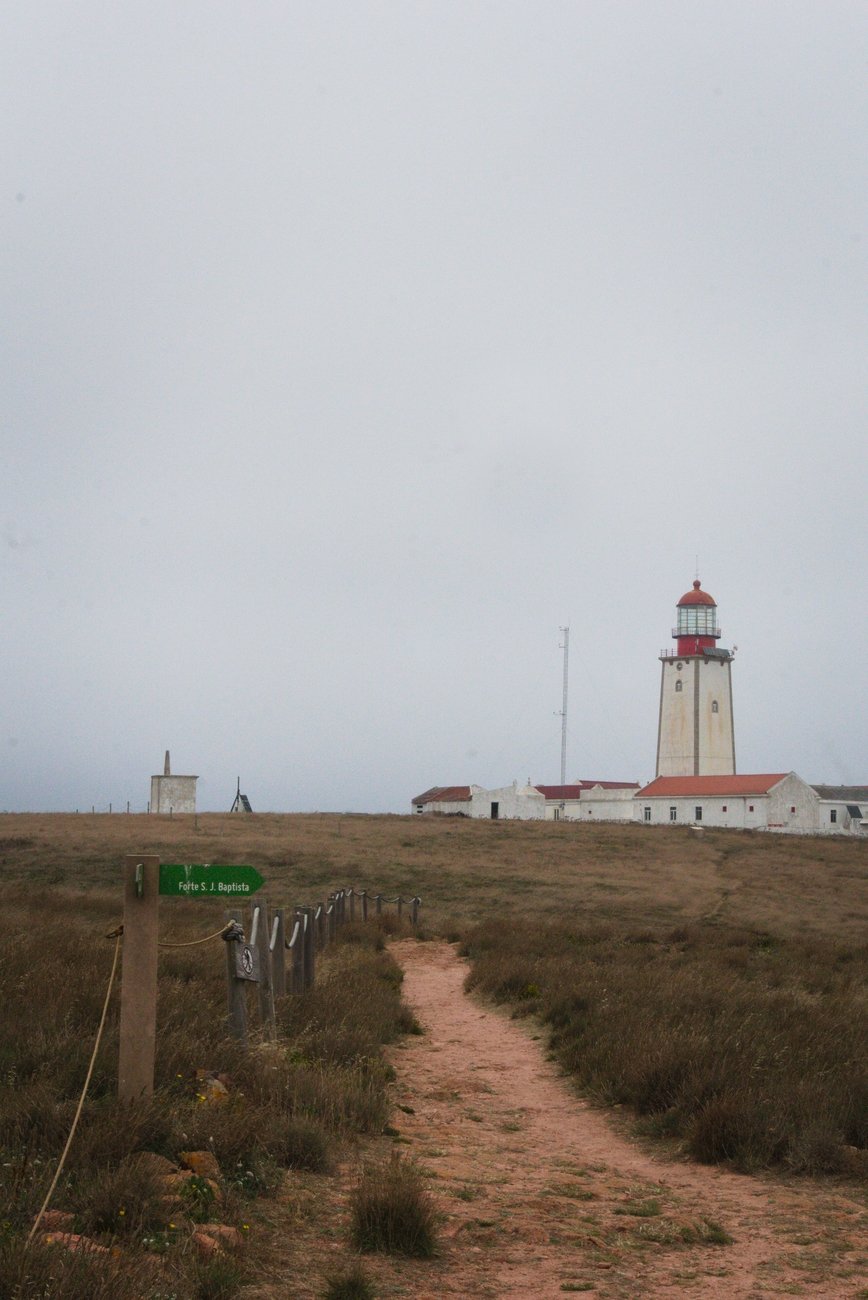
This structure is located at the top of the island, about 112 metres above sea level. It's on the path between the cistern and the lighthouse that you get one of the best views: the one that allows you to see the other two groups of islets. It was also from here, on our way to the fishermen's neighbourhood, that we finally got to see the armeria berlengensis, an endemic plant of Berlengas, which usually blooms between April and May.

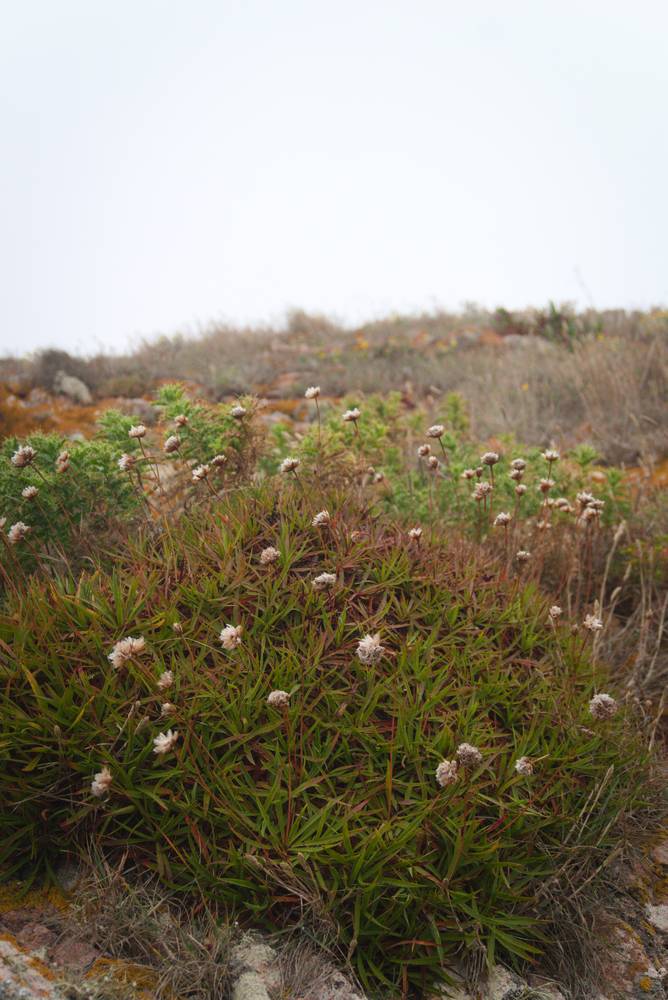
Cações Strait
On the way back to the fishermen's quarters, we come across Cações Strait, an area famous for showing the division of the island of Berlenga Grande: Berlenga (east) and Ilha Velha (west). This formation is the result of a reverse fault, which is no longer active.
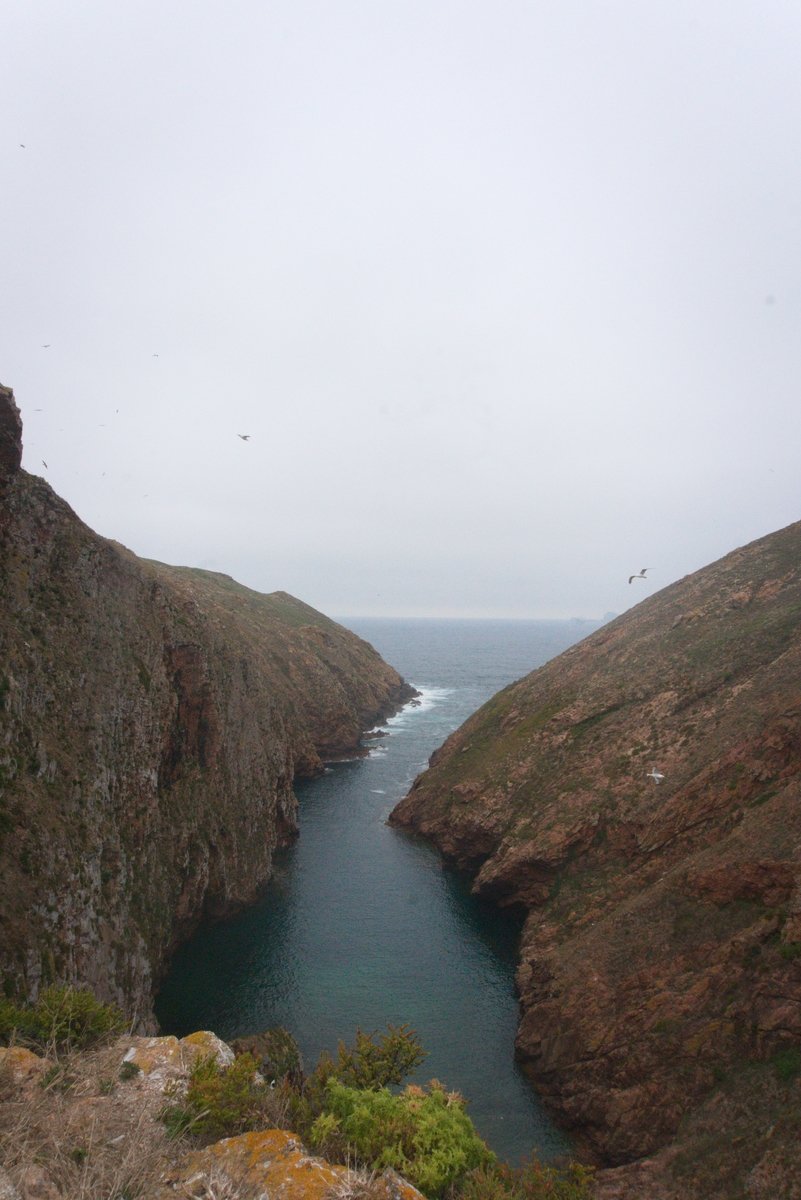
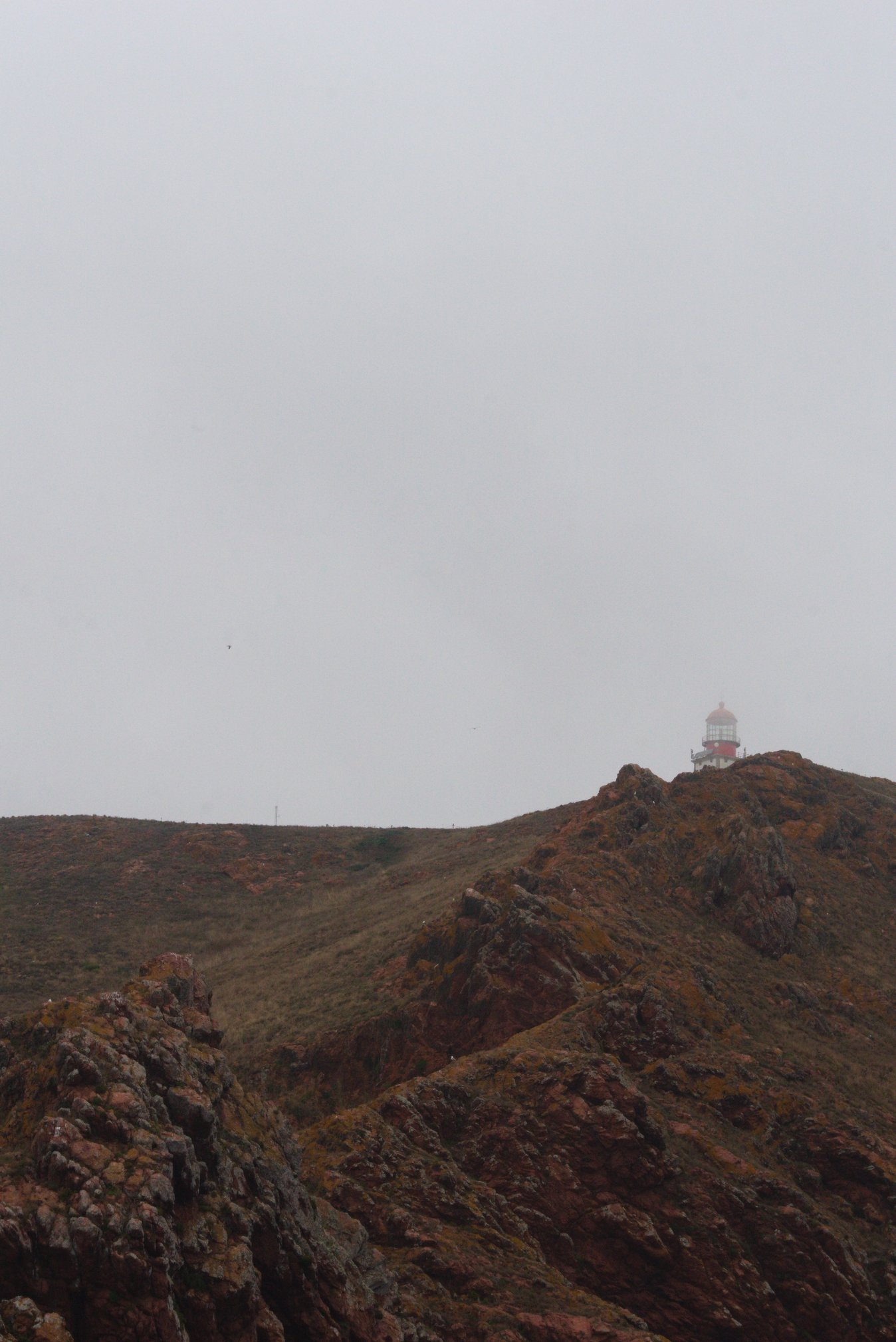
Buzina / Old Island
Before going down to the fishermen's neighbourhood, you can turn left and follow a 1.5Km trail that will take you to the old island. About halfway along, you reach Buzinas, an area where you can see Peniche and, closer by, the Velha Islet and the Maldito Islet.
'Commander Andrade e Silva' Fishermen's Neighbourhood
Heading towards the pier, you begin to descend into the fishermen's neighbourhood. The 20 houses, arranged in three rows of white, organised buildings, were built to house the Berlengas fishermen and their families, who currently only spend the warmer months here. Fishermen who leave the Berlengas to fish are only authorised to fish by rod.
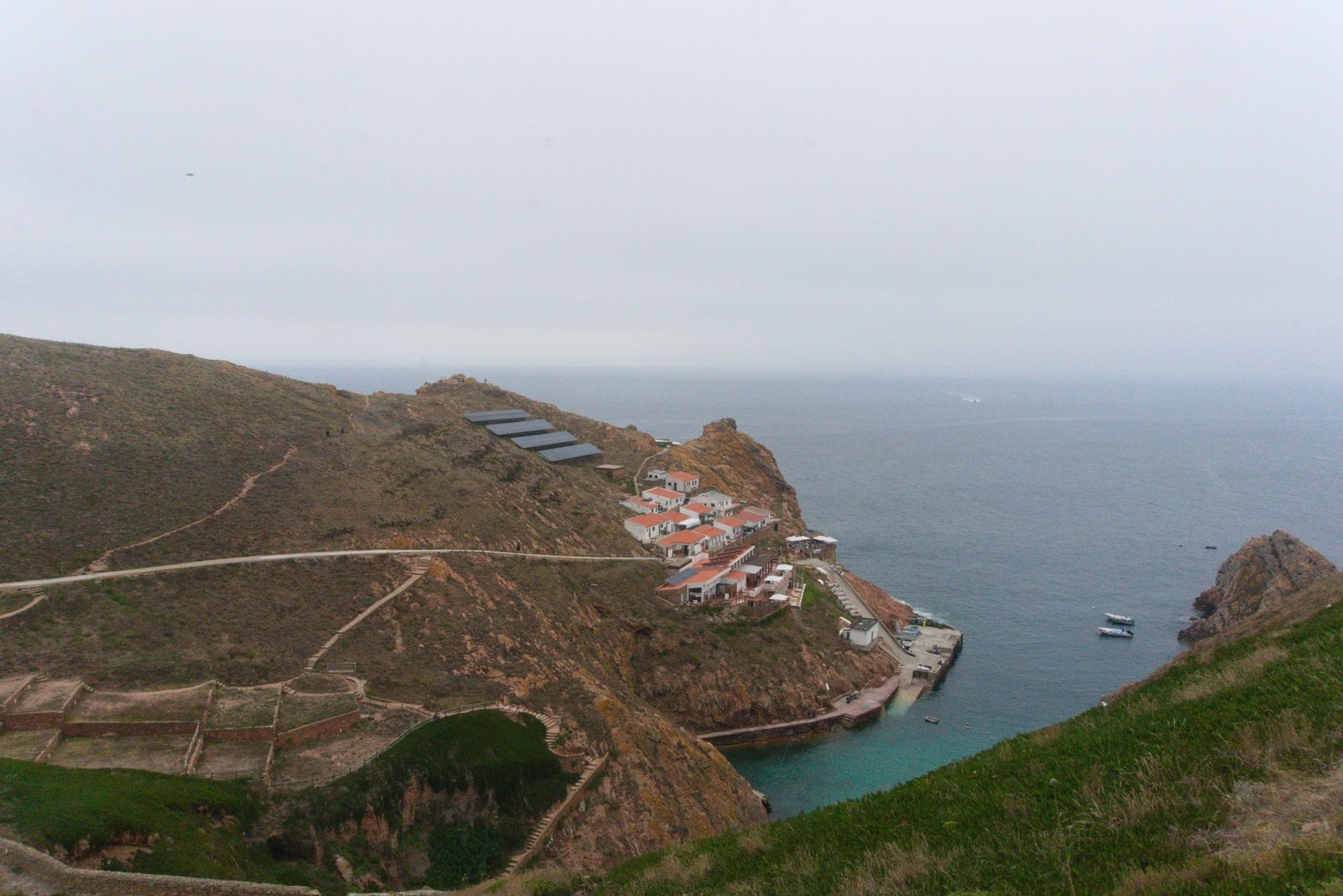
Berlenga Grande Beach
Going down to the boarding pier, there is a small path next to the rock that, even for those who don't want to go to the beach, should be followed. It is the path that leads to Berlenga Grande Beach, a small sandy area with blue water.
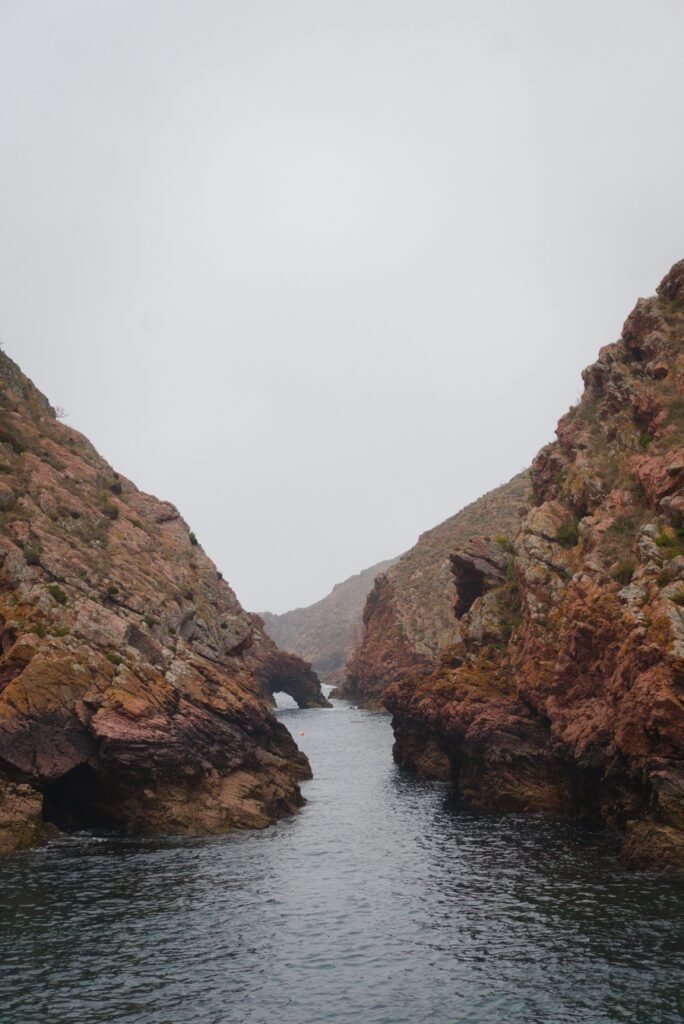
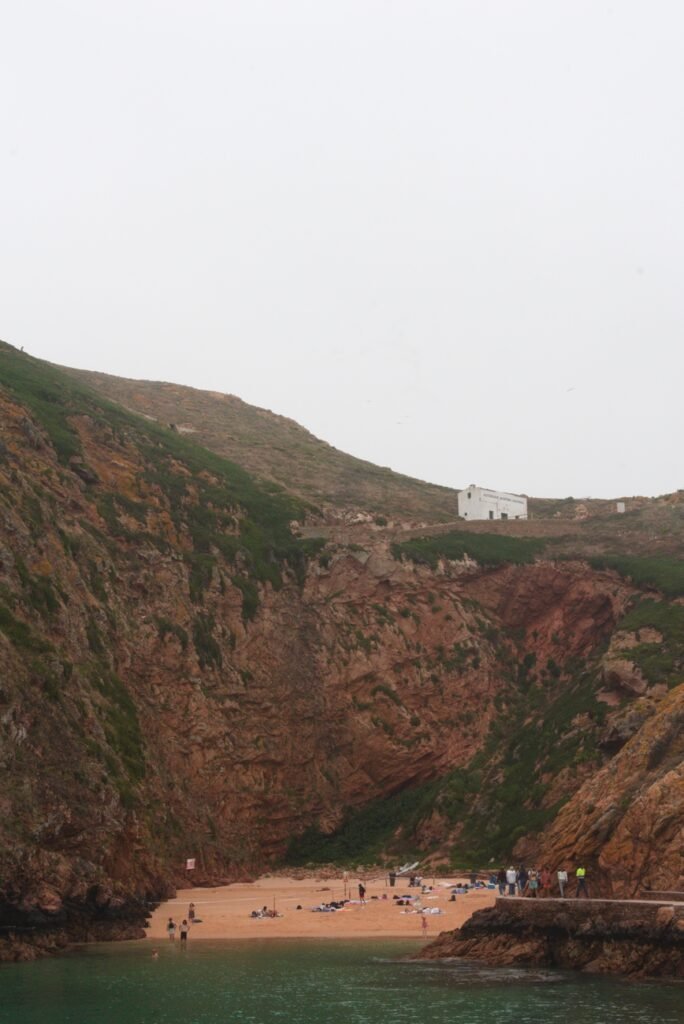
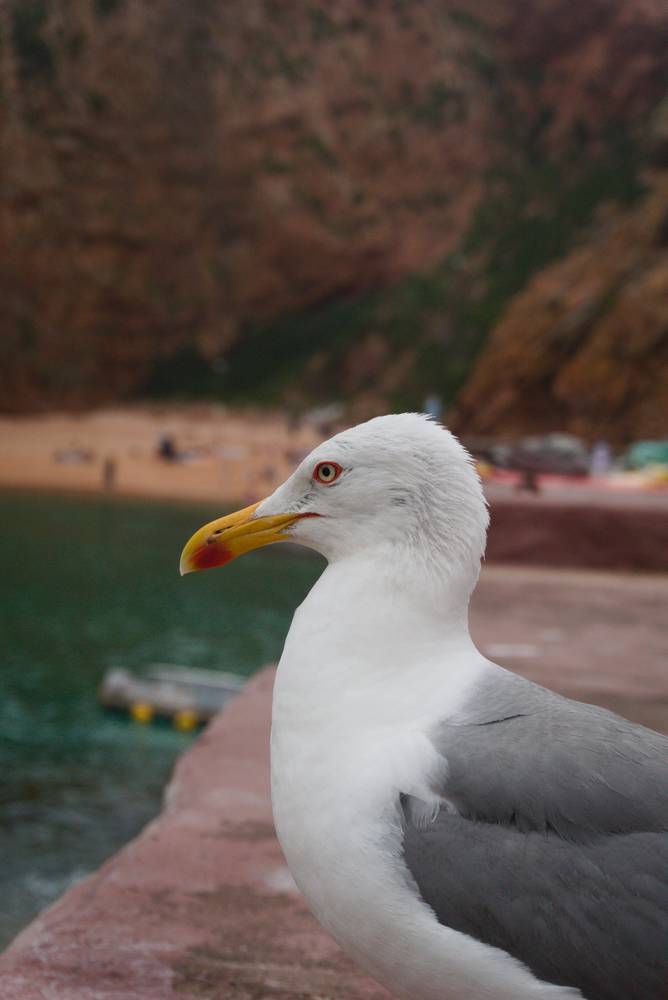
Caves
As a rocky island, Berlenga Grande is of course full of caves. That said, we recommend including a visit to the caves in your trip.
In addition to the Cova do Sono (“Cathedral”) that we have already mentioned, there is also the Blue Cave, known for the color of its water, the Inês Cave, the Flandres Cave and some other small caves.
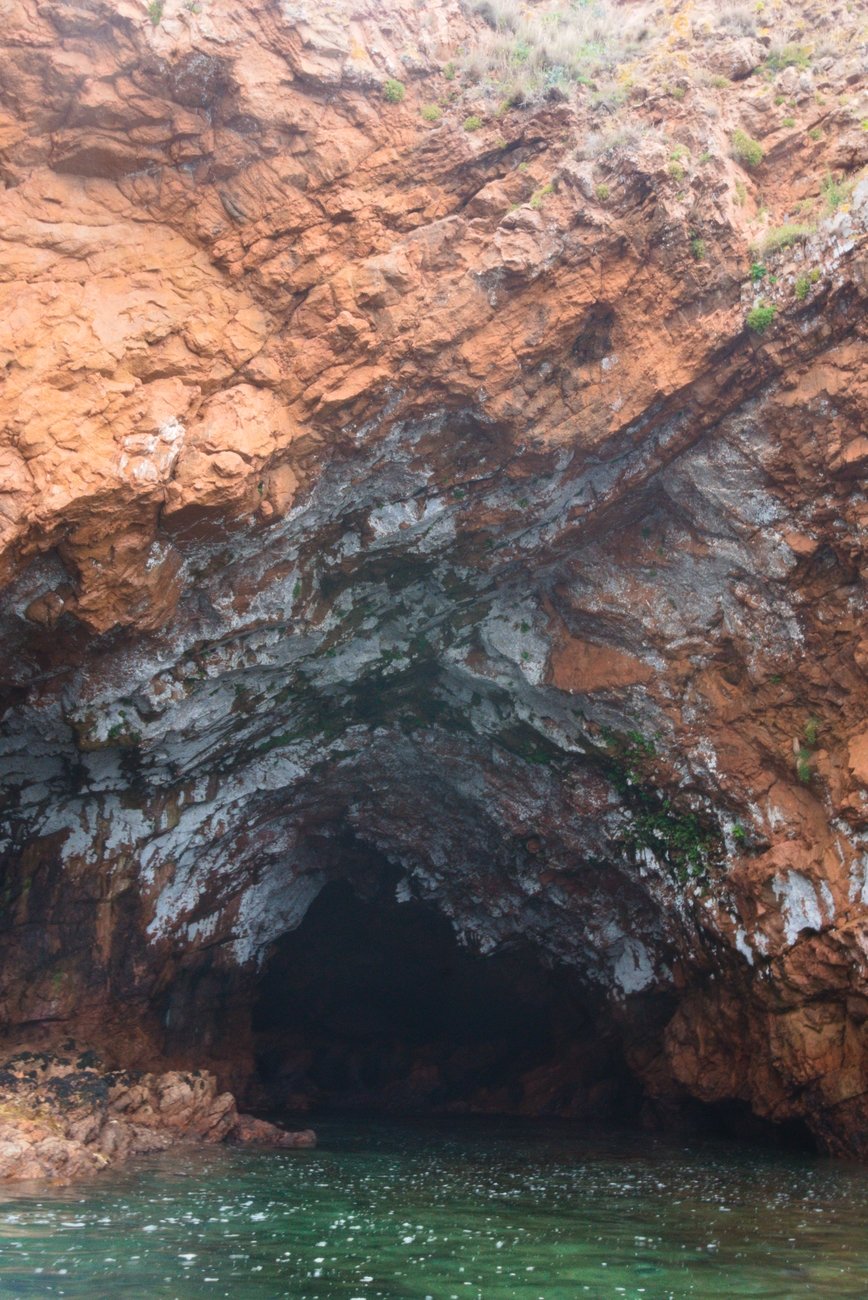
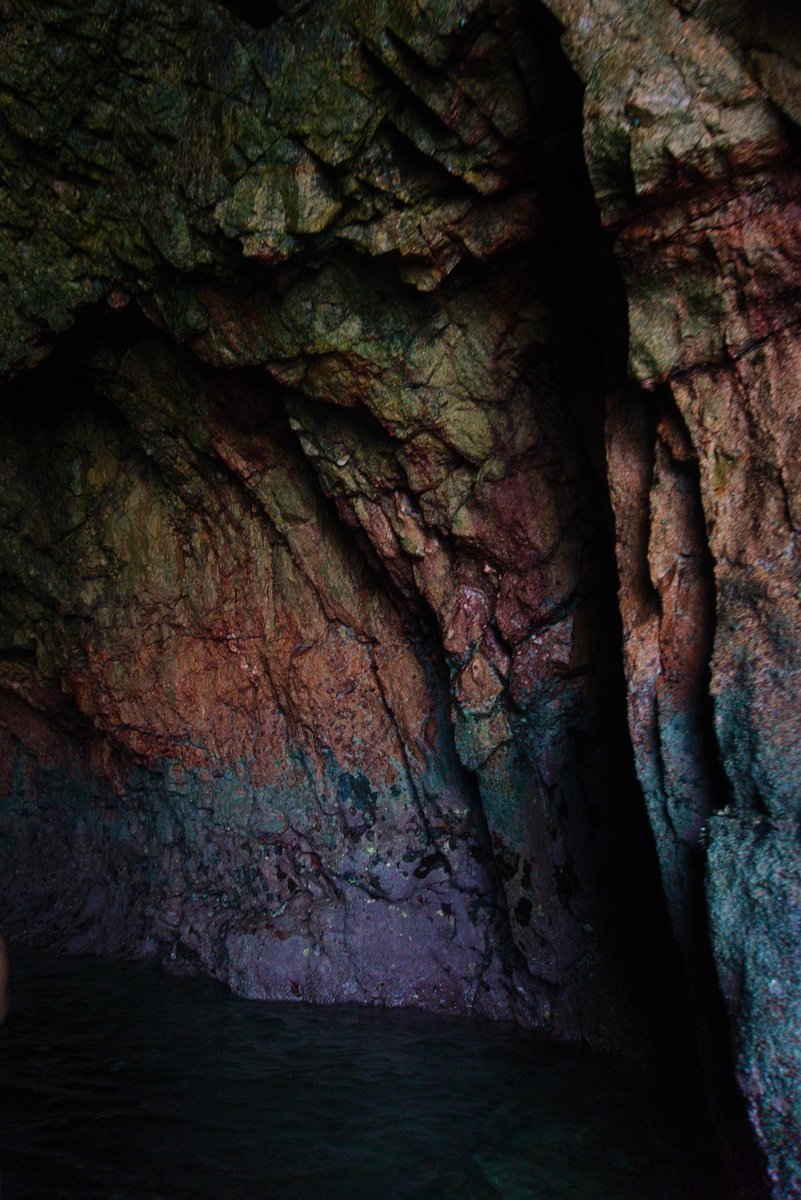
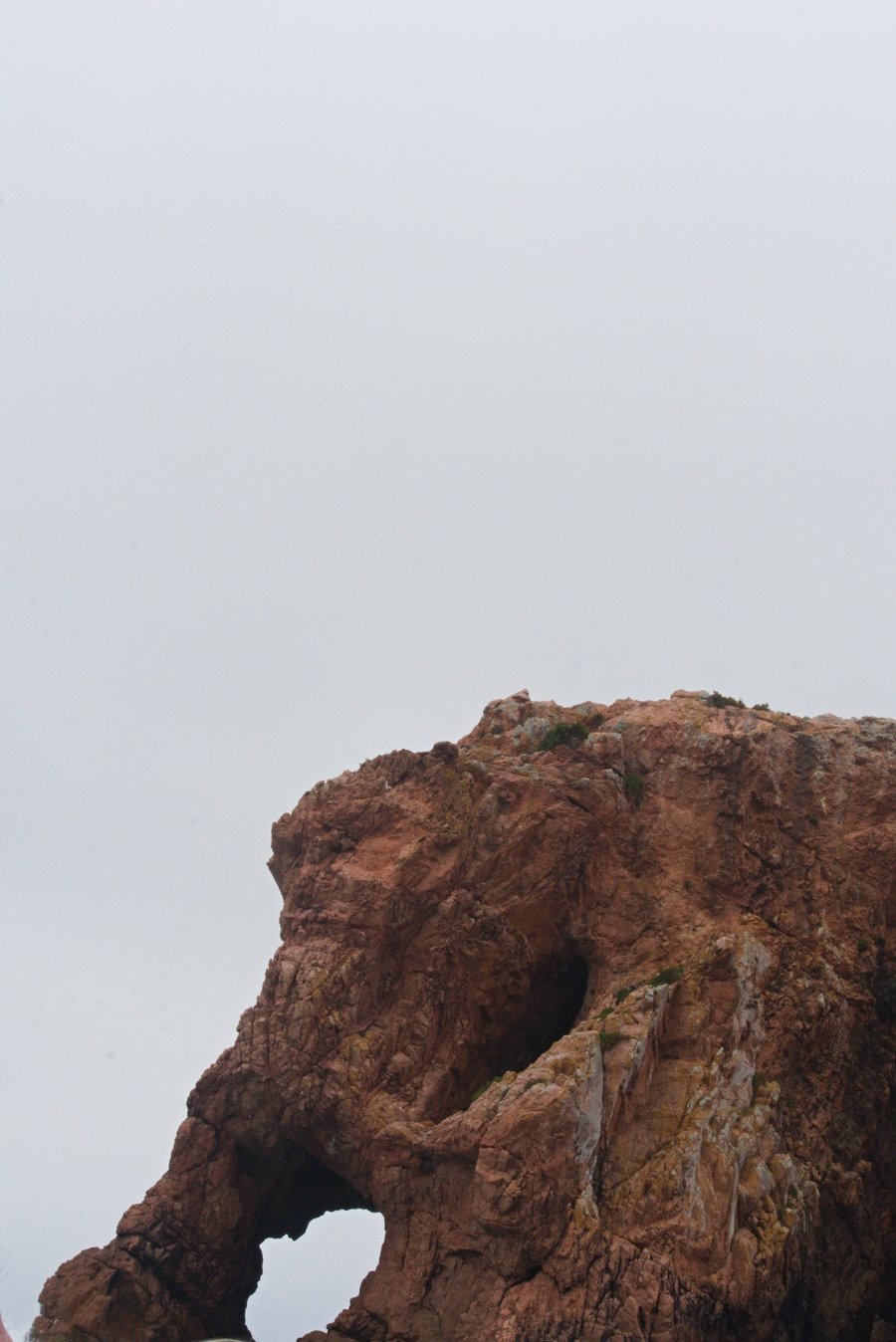
In addition to these, there is also Furado Grande and Furado Pequeno. THE Big hole allows for a complete crossing, being a tunnel 70 meters long and over 20 meters high, which takes us to the most southwestern part of the island.
From here, the boat continued to another of the most famous caves: the Elephant Head, a rock formation that, as its name suggests, appears to be the head of an elephant.
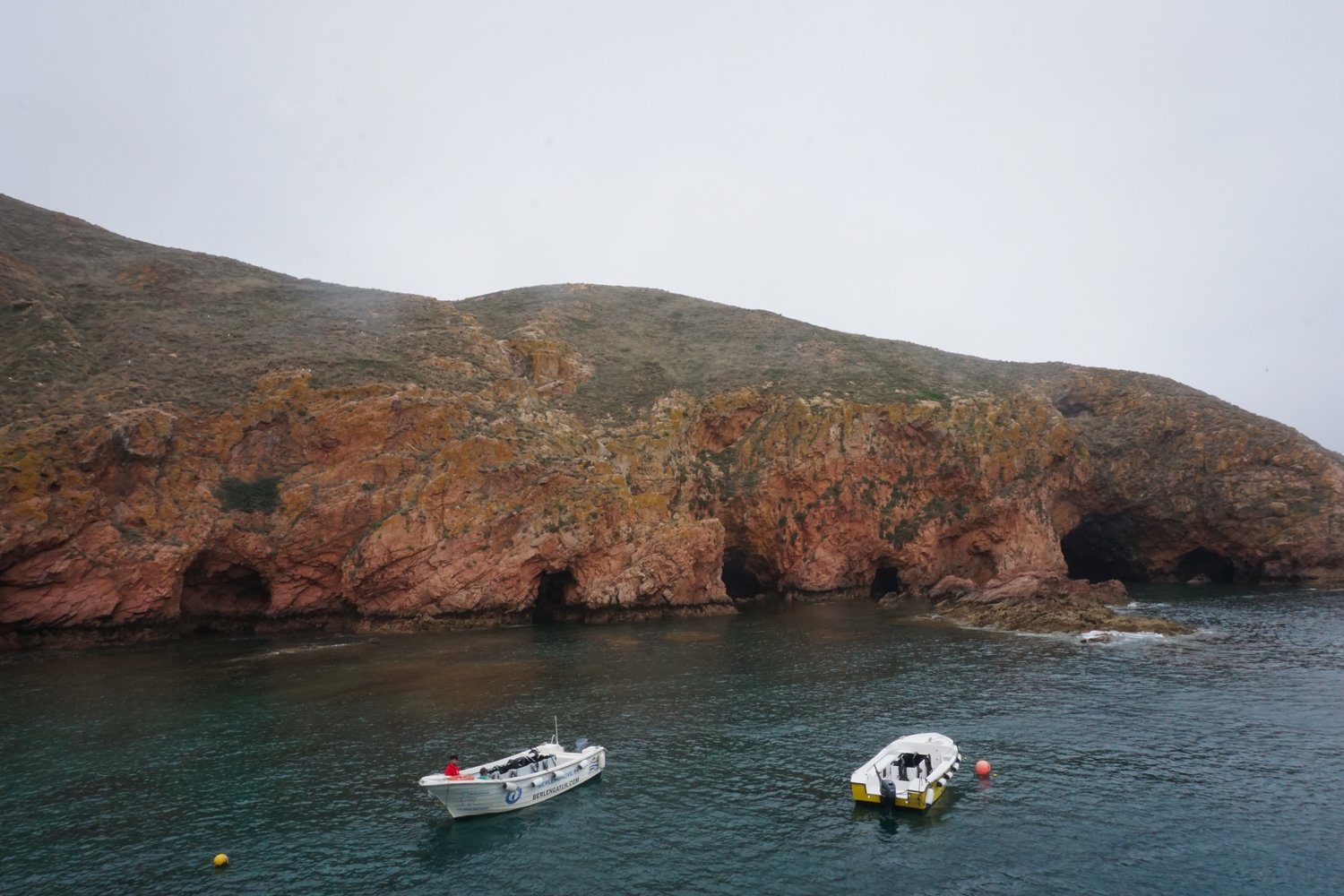
Tour Operators: Our Experience
As we mentioned before, there are many tour operators that offer this crossing and these tours. Some are open practically all year round, others at specific times, and of course they offer different prices and activities. Regardless of the operator, trips are usually half a day long.
In our case, we choose BerlegaTur. This operator offers different packages that can include round trip, cave visits, guided tours and snorkeling. Depending on the package chosen and the time of year (low, medium or high season), prices vary. In our case, we went in the mid-season and opted for package 3: trip + visit to the caves + guided tour, which cost 39€/person in the mid-season (in June 2024). We believe this is the best package: the visit to the caves is well worth it and the guided tour only adds €5 to the price (and believe me, it is well worth it!).
The boarding area in Peniche is easy to find and has parking. In this area you will find many tour operators that go to Berlengas, so you can always take the opportunity to compare them.
The trip begins on a catamaran, in this case the BerlengaTur catamaran, a black and white vessel measuring 18 meters in length. This trip takes about 30/40 minutes, depending on weather conditions. The return trip is a little quicker and doesn't cause as much nausea.
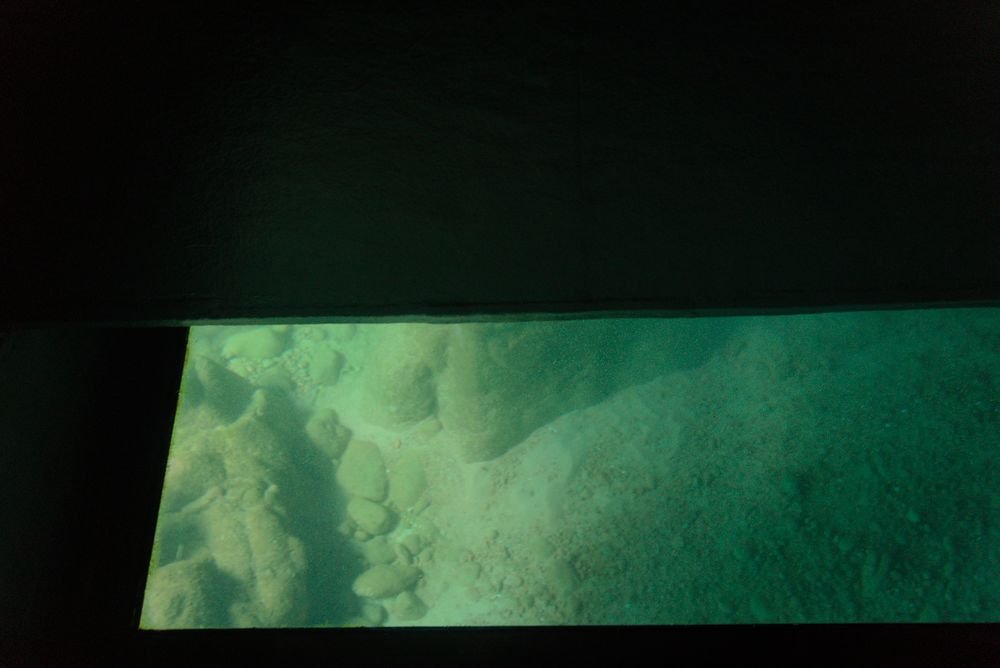
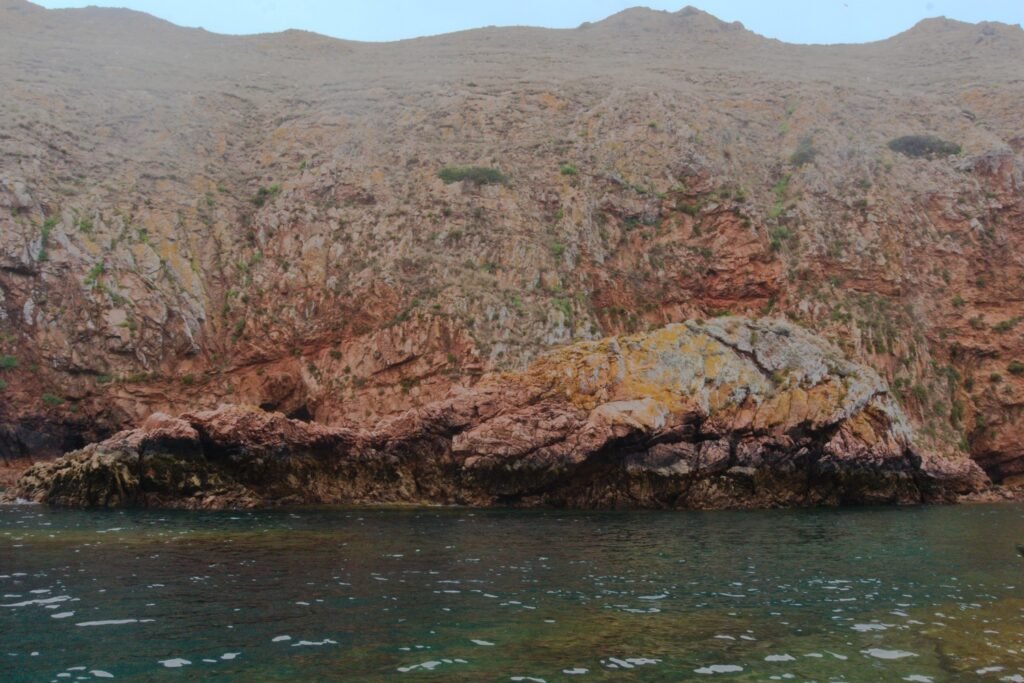
Arriving at the landing docks in Berlenga Grande, we changed to a smaller boat, the Leoti. This boat, 7 meters long, is used for visiting the caves and, because of this, has a glass bottom. This visit to the caves took about 30 minutes and involved seeing both sides of the island. The visit to the caves was led by Margarida, who was a fantastic guide.
From here, and as we had the package with the guided tour, we were left at the famous Forte de São João Baptista, while the other passengers were taken back to the disembarkation pier. On the guided tour it ended up being just us and our guide, Bernardo, who was amazing and super helpful. Leaving the Fort, we walked around the island to the landing stage, where we still had about an hour to visit the island freely.
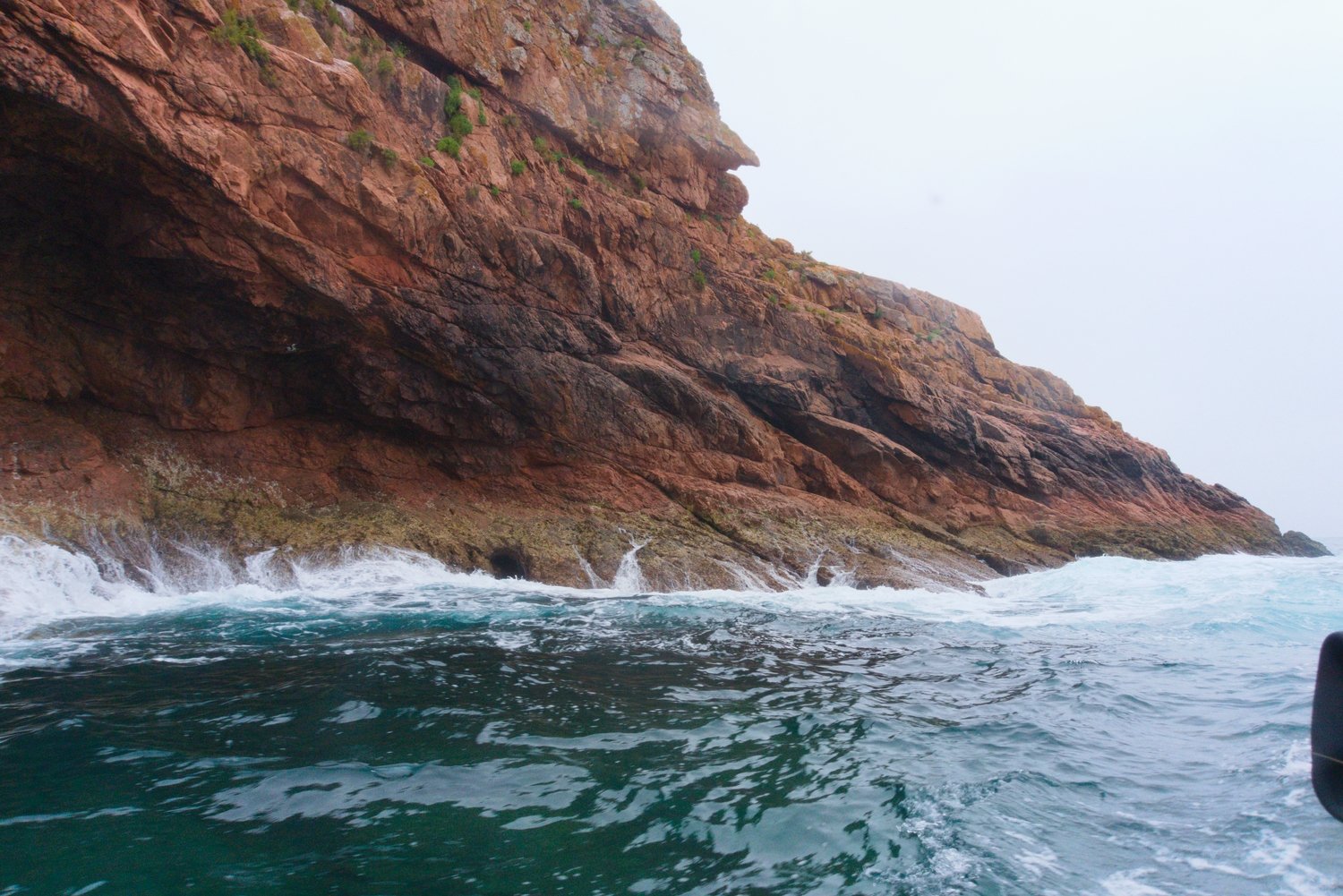
When to visit Berlengas
Although there are trips available throughout most of the year, we do not recommend that you visit on days when the sea is rough or the weather is cold. Firstly because the journey will be more complicated and then because, despite being close to the coast, they are in the middle of the ocean and the weather is stronger.
The fishing population itself only spends about half the year here, living in the Peniche area during the winter months – so avoid the autumn/winter months for venturing out.
That said, the Berlengas were a destination that (by far) exceeded our expectations. Despite the more troubled trip there, we loved the experience with the tour company, with our incredible guides and, of course, with this wonderful natural reserve that is the Berlengas.
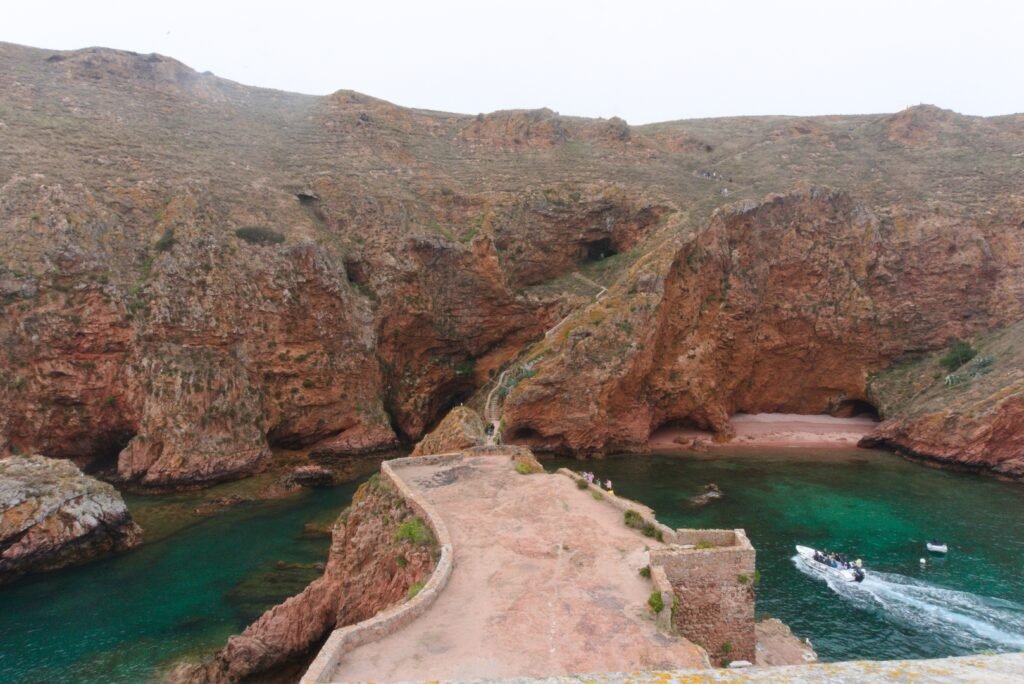
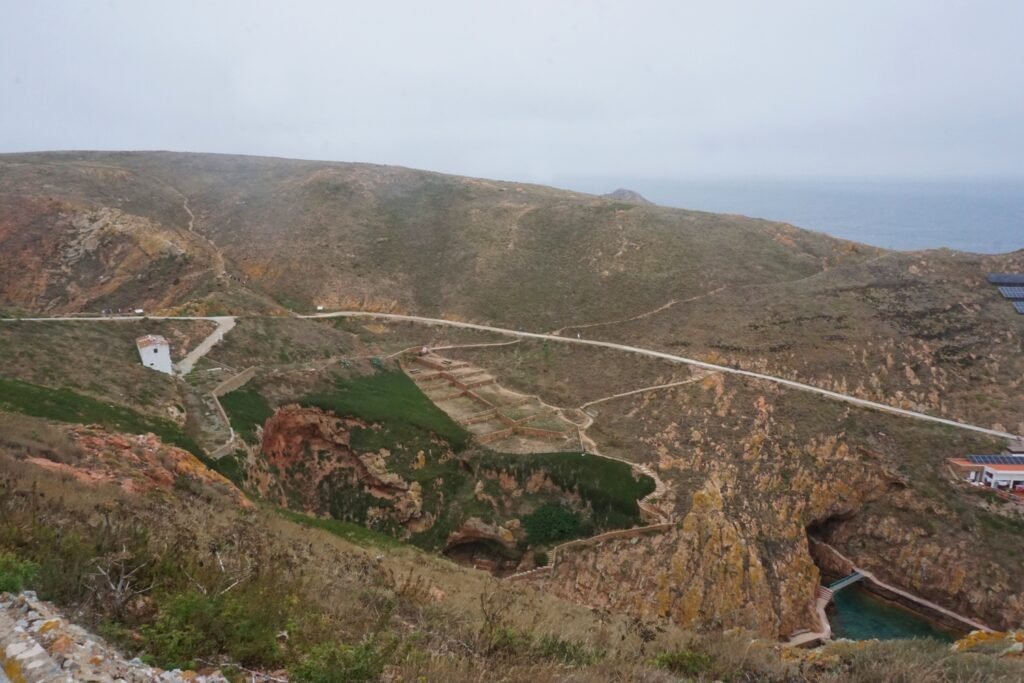
more to see
